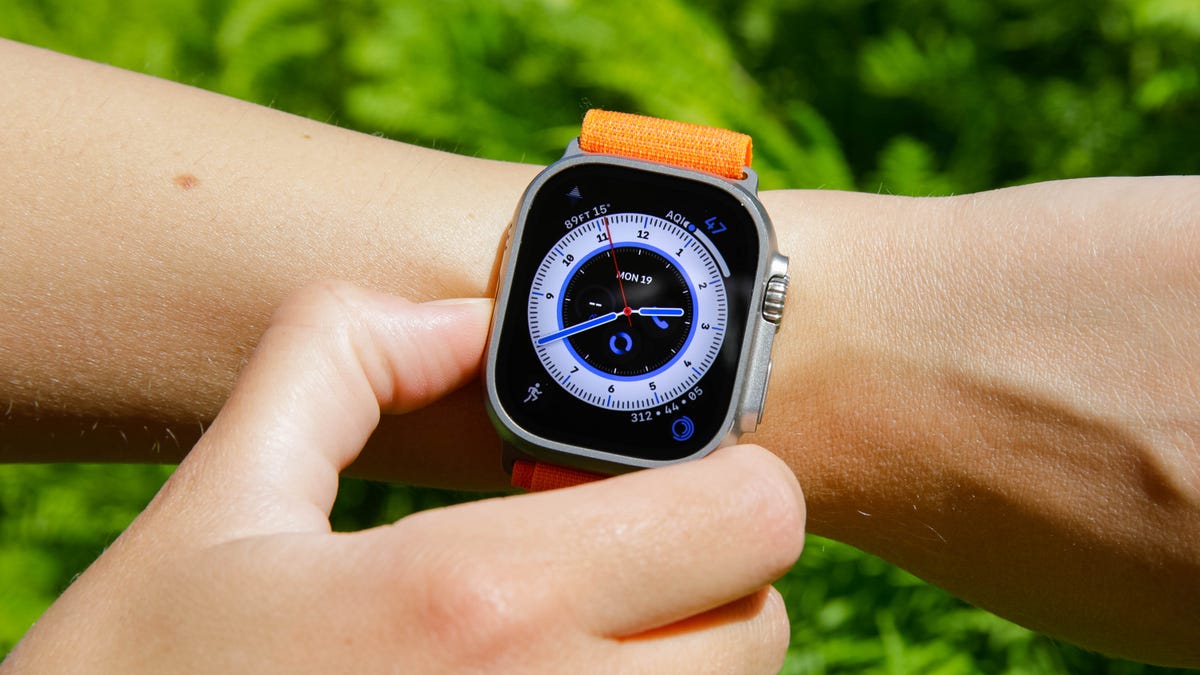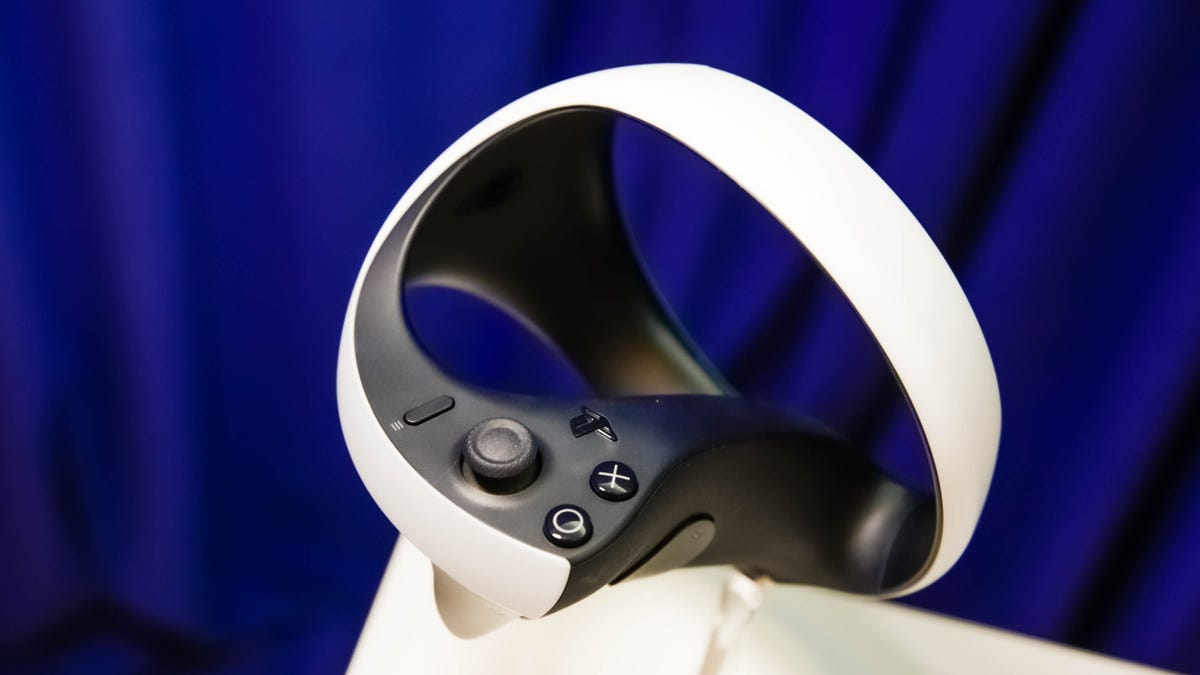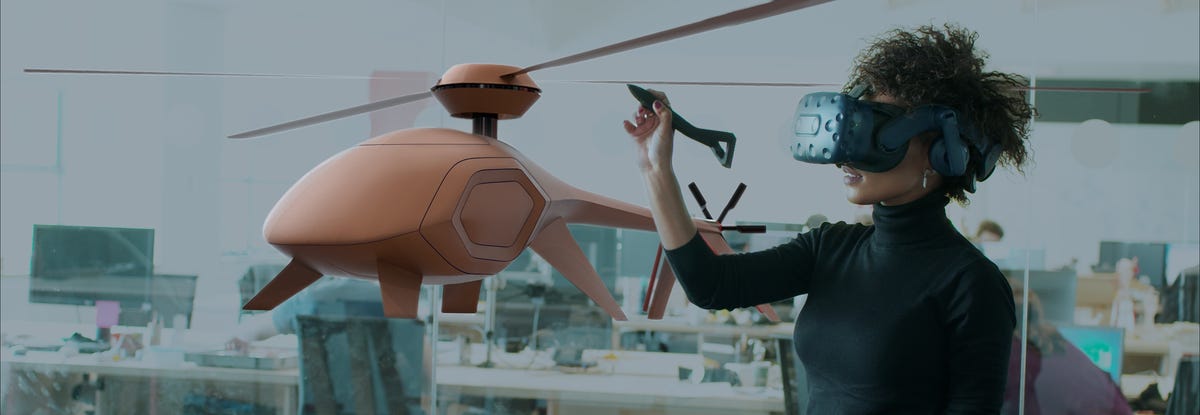The evolution of VR and AR is in major flux, and right now Apple’s bleeding-edge, ultra-expensive Vision Pro headset is sitting at the top of the heap — and it’s not even expected to arrive until 2024.
After a demo at WWDC, I came away instantly impressed at how the Vision Pro hardware synthesized so much of what I’ve seen in VR and AR over the last five years. But this time it was all done with Retina Display-level resolution and smooth, easy hand-tracking finesse. At $3,499 (around 2,800 or AU$5,300 converted), Apple’s hardware is priced far beyond VR headsets like the Meta Quest 2, and also aims to be a full computer experience in AR (as well as VR, even though Apple doesn’t outright acknowledge it).
Even so, there are notable absences from the Vision Pro, at least based on what Apple presented at WWDC. I had expectations as to what Apple might make the killer apps and features for its spatial computer headset, and only some of them materialized. Maybe others will emerge as we get closer to Apple’s 2024 headset release, or get introduced via software updates much like Meta has done with the Quest over time.
Still, I’m surprised they’re not already part of the Vision Pro experience. To me, they’ll eventually make everything I saw work even better.
Read more: Best VR Headsets of 2023
Fitness
The Meta Quest’s best feature, other than games, is its ability to be a portable exercise machine. Beat Saber was my pandemic home workout, and Meta’s acquisition of Within (maker of Supernatural, a subscription fitness app that pairs with the Apple Watch) indicates how much fitness is already a part of the VR landscape.
Apple is a prime candidate to fuse VR, AR, fitness and health and take the experience far beyond what Meta has done. Apple already has the Apple Watch and Apple Health and Fitness Plus subscription workouts. And yet, the Vision Pro has no announced fitness or health apps yet, except for a sitting-still Meditation app that’s more of a breathing prompt.

When will the Apple Watch become part of the Vision Pro experience?
Even more puzzling: The Vision Pro seemingly doesn’t work with the Apple Watch at all. This could change. Maybe Apple is waiting to discuss this aspect next year. Or, maybe, it will arrive with a future version of the Vision hardware.
Some VR sporting game app makers are already announcing ports for the Vision Pro, including Golf Plus, an app that works in VR with controllers. The assumption, for now, is that these apps will find a way to work just using eye and hand tracking.
Apple didn’t even demonstrate that much active motion inside the Vision Pro; my demos were mostly seated, except for a final walk-around experience where I looked at a dinosaur up close.
Is the dangling battery pack part of the concern? The headset’s weight? Or is Apple starting with computing interfaces first and adding fitness later?

The iPhone in your pocket should ideally interface with Vision Pro, too.
iPhone, iPad and Watch compatibility
Speaking of fitness and the Apple Watch, I always imagined Apple’s AR headset would emphasize seamless compatibility with all of its products. Apple didn’t exactly do that with the Vision Pro, either.
The Vision Pro will work as a monitor-extending device with Macs, providing high-res virtual displays in a similar way that headsets like the Quest 2, Quest Pro and others already do. I didn’t get to try using the Vision Pro with a Mac, and I didn’t get to use a trackpad or keyboard, either. The Vision Pro will work with Magic Trackpads and Magic Keyboards to add physical trackpad/typing input options, again, like other VR/AR headsets, in addition to onboard eye- and hand-tracking.
And yet, the Vision Pro won’t interface directly with iPhones, iPads or the Apple Watch. Not yet, at least.
The Vision Pro primarily runs iPad-type apps. This is why the iPad Pro seems to be the best computer companion to the Vision Pro: it has a keyboard, a trackpad, built-in motion tracking that’s already AR-friendly, front and rear depth-sensing cameras that could possibly help with 3D scanning environments or faces, and it has a touchscreen and Pencil stylus.

Qualcomm’s software tools for AR glasses extend phone apps to headsets. The Apple Vision Pro bypasses the phone and works on its own.
Apple is emphasizing that the Vision Pro is a self-contained computer that doesn’t need other devices. That’s understandable, and most of Apple’s cloud services, like FaceTime, will work so that the Vision Pro will essentially absorb most iPhone and iPad features. Yet I don’t understand why iPhones, iPads and Watches wouldn’t be welcome input accessories. Their touchscreens and motion controls could help them act as remotes or physical-feedback devices, in a similar way to how Qualcomm is already looking at the relationship between phones and AR glasses. I hold up my iPhone all the time to enter passwords on the Apple TV. I seamlessly drop photos, links and text from my iPhone over to my Mac.
Touchscreens could act as virtual keyboards. Drawing on the iPad could mirror a 3D art interface. With Apple’s already excellent passthrough cameras, iPhone, iPad and Watch displays could become interactive second screens, tactile interfaces that sprout extra parts in AR. Also, there’s the value of haptics and physical feedback.

The PSVR 2 controller: One advantage to physical devices is physical feedback.
No haptics
The buzzing, tapping and rumbling feelings we get on our phones, watches and game controllers, those are feedback tools I’ve really connected with when I go into VR. The PlayStation VR 2 even has rumbling feedback in its headset. The Vision Pro, with eye and hand tracking, has no controllers. And no haptic feedback. I’ve been fascinated by the future of haptics — I saw a lot of experimental solutions earlier this year. For now, Apple is sitting out on haptic solutions for Vision Pro.
When I use iPhones and the Watch, I feel those little virtual clicks as reminders of when I’ve opened something, or when information comes in. I feel them as extensions of my perceptual field. In VR, it’s the same way. Apple’s pinch-based hand tracking technically has some physical sensation when your own fingers touch each other, but nothing will buzz or tap to let you know something is happening beyond your field of view — in another open app, for instance, or behind you in an immersive 3D environment.
Microsoft made a similar decision with the HoloLens by only having in-air hand tracking, but former AR head Alex Kipman told me years ago that haptics were part of the HoloLens roadmap.
Apple already has haptic devices; the Apple Watch, for example. All those iPhones, too. I’m surprised the Vision Pro doesn’t already have a solution for haptics. But maybe it’s also on its roadmap?

Logitech’s VR Ink, released in 2019, is an in-air 3D stylus. How will Apple handle creative tools in 3D?
Will there ever be other accessories like the Pencil?
One of the wildest parts about a mixed-reality future is how it can blend virtual and real tools together, or even invent tools that don’t exist. I’ve had my VR controllers act like they’re morphing into objects that feel like they’re an extension of my body. Some companies like Logitech have already developed in-air 3D styluses for creative work in VR and AR.
Apple’s Vision Pro demos didn’t show off any creative apps beyond the collaborative Freeform, and nothing that showed how 3D inputs could be improved with handheld tools.
Maybe Apple is starting off by emphasizing the power of just eyes and hands here, similar to how Steve Jobs initially refused to give the iPad a stylus. But the iPad has a Pencil now, and it’s an essential art tool for many people. Dedicated physical peripherals are helpful, and Apple has none with its Vision Pro headset (yet). I do like VR controllers, and Meta’s clever transforming Quest Pro controllers can be flipped around to become writing tools with an added stylus tip. As a flood of creative apps arrive on the Vision Pro in 2024, will Apple address possibilities for dedicated accessories? Will the Vision Pro allow for easy pairing of them? Hopefully, yes.
The Apple Vision Pro is a long way from arriving, and there’s still so much we don’t know. As Apple’s first AR/VR headset evolves, however, these key aspects should be kept in mind, because they’ll be incredibly important ways to expand how the headset feels useful and flexible for everyone.

